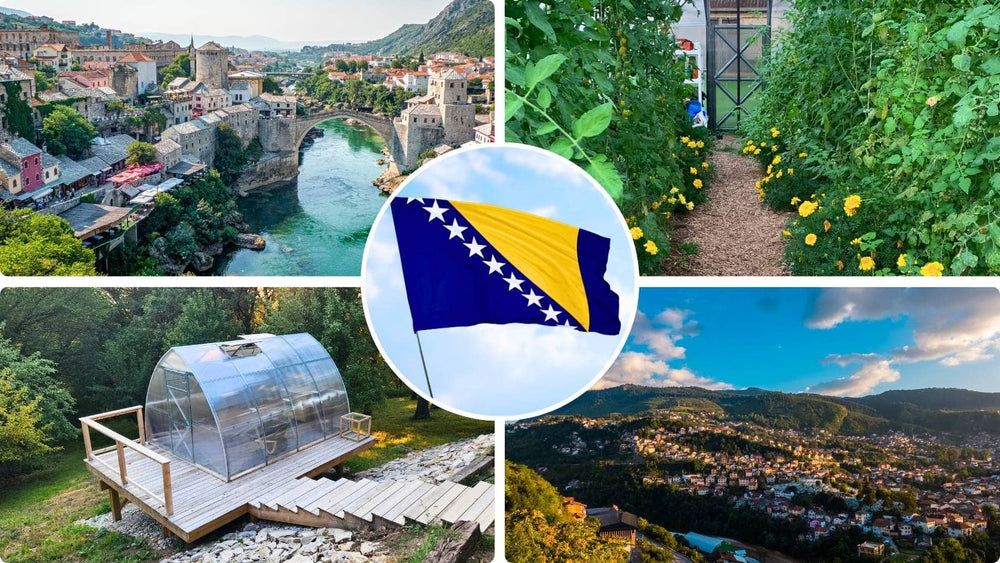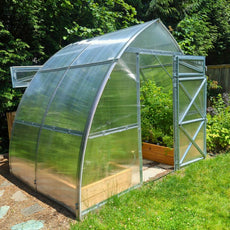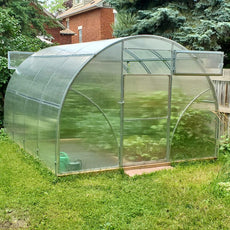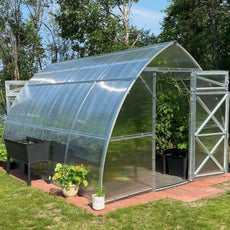In this article, you will learn:
- Characteristics of Bosnia and Herzegovina’s Planting Regions
- Challenges of Growing in Bosnia and Herzegovina
- The Benefits of Using a Greenhouse in Bosnia and Herzegovina
Bosnia and Herzegovina experiences a mix of continental and Mediterranean climates. The northern and central regions have cold winters, with temperatures dropping as low as -15°C, while the south enjoys milder winters. Summers can be hot, with temperatures frequently exceeding 30°C, creating excellent conditions for crop cultivation.

Image from Plant Maps
Characteristics of Bosnia and Herzegovina’s Planting Regions
Bosnia and Herzegovina’s varied climate influences agriculture in different ways:
- The northern and central regions experience a continental climate with cold winters (-5°C to -15°C) and warm summers (25°C to 32°C).
- The southern region, including Herzegovina, enjoys a Mediterranean climate with mild winters (0°C to 10°C) and hot summers (30°C to 40°C).
- Mountainous areas have shorter growing seasons due to colder conditions and snowfall.
- Precipitation varies significantly, with higher rainfall in the mountains and drier conditions in Herzegovina.
- The growing season typically lasts from April to October in most regions, ranging from 160 to 210 days.
These conditions offer great agricultural potential but also require gardeners to adapt to climatic extremes.
Challenges of Growing in Bosnia and Herzegovina
Late Spring and Early Autumn Frosts
Frosts in early spring and late autumn can shorten the growing season, particularly in northern and mountainous areas.
Hot and Dry Summers
The Mediterranean south experiences prolonged heat waves and occasional droughts, which can stress crops and require efficient irrigation.
Heavy Rain and Flooding
Some regions, especially river valleys, are prone to heavy rain and seasonal flooding, which can damage crops and soil quality.

The Benefits of Using a Greenhouse in Bosnia and Herzegovina
Greenhouses provide an excellent way for Bosnian gardeners to overcome these climatic challenges and expand their gardening potential.
Extend Your Growing Season
- Without a greenhouse:
Outdoor cultivation is limited to approximately 160-210 days, depending on the region. Mountainous areas experience shorter growing seasons and lower temperatures.
- With a greenhouse:
A greenhouse can extend the growing season to nearly year-round cultivation. It enables gardeners to plant as early as February and harvest well into December.
Grow a Wider Variety of Vegetables
- Without a greenhouse:
Outdoor gardening in Bosnia and Herzegovina is best suited to crops such as:
|
Wheat Potatoes Cabbage |
Onions Apples Grapes |
- With a Greenhouse:
A controlled environment allows gardeners to successfully cultivate a broader range of crops, including:
|
Tomatoes Peppers Cucumbers Eggplants Zucchini Citrus fruits (lemons, oranges, mandarins) Melons |
Figs Table grapes Herbs (basil, thyme, rosemary) Exotic fruits such as pomegranates and kiwis Flowers |





